Ducts for ventilation: classification, features + installation tips
Maintaining a comfortable indoor microclimate is not possible without air circulation. To solve this problem, buildings are equipped with ventilation systems. An important component of such communications are air ducts, through which the movement of flows.
Depending on the tasks performed, such devices may vary in design, parameters, manufacturing material and other features. When planning the arrangement of a ventilation system, it is worth paying special attention to the choice of air channels - the installation technology, the efficiency and reliability of the complex depend on this.
Not sure which ventilation ducts are best for use? We will help you in this matter. The article describes a detailed classification of different types of ventilation ducts, outlines the specifics of their use and installation. In addition, we have listed practical recommendations for self-assembly of the duct system.
The content of the article:
What are air ducts for?
The term “air ducts” means specially made channels for ventilation, due to which air masses are supplied in a certain direction. Through such devices, oxygen enters the residential or industrial premises, CO is removed2 and other pollution.
In such systems, it is usually possible to adjust the intensity of the air masses and their pressure using valves.
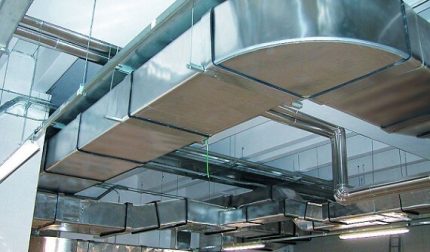
There are two ways to solve the problem of air circulation:
- Option number 1. In this case, they are limited to natural or forced ventilation, providing a single exhaust channel to remove used air.The receipt of new is carried out through technological openings and / or doors, windows.
- Option number 2. A more complex and efficient design is considered supply and exhaust system, involving the laying of two channels located separately from each other. Fresh air flows through one of them, and used air is removed along the other.
Often, in one ventilation communication, several types of ducts are used, which make up a complex network with various branches, shafts, and hoses.
Equipment classification criteria
The widespread use of such devices in various fields of residential and industrial construction determines a huge assortment of these products. The main categories and size range of ducts are given in regulatory documents TU 36-736—93, SNiP 2.04.05—91, BCH 353—86.
Taking various features as a basis, several criteria can be distinguished by which ventilation products are classified.
Criterion No. 1 - according to the installation method
Depending on the laying method, two main types of structures can be distinguished:
- external ducts laid along the facades of buildings;
- built-in ducts or shafts for ventilation.
Outdoor ducts - attached / hanging boxes, which are made of pipes and other parts, and can have various shapes, parameters. The selection of elements is influenced by the structural features of the structure and the design of the industrial / residential premises.
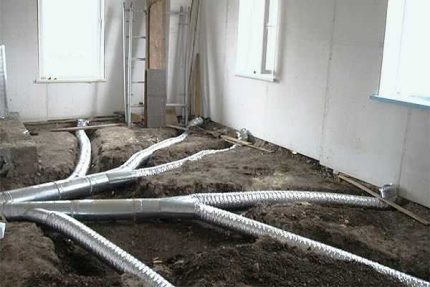
Built-in channelsintended for ventilation, as a rule, are mounted in the walls of buildings. The inner surface of the shaft in this case should be absolutely smooth, since any obstacles, for example, the remains of the solution interfere with the free flow of air masses.
To be able to conduct regular duct cleaning, a process hole is left at the bottom of the channel.
Criterion No. 2 - according to the material of manufacture
Depending on the scope of use, ventilation system elements made of different materials can be used, namely:
- galvanized steel;
- of stainless steel;
- various types of polymers;
- metal plastic.
Galvanized elements well suited for use in temperate climates, in the absence of aggressive factors. The application of zinc protects the steel from rust, which ensures the durability of such products.
Resistance to water vapor prevents the occurrence of mold, so this option is recommended for use in bathrooms, catering establishments and other places with a traditionally high moisture content.
Air ducts stainless steel (heat-resistant or fine-fiber) can be used to transfer air flows in an aggressive environment at ultra-high temperatures - up to 500 ° C.
Typically, such elements are used in heavy industry - metallurgical, mining and processing enterprises.

Plastic ducts most often made of polyvinyl chloride, which perfectly shows itself in aggressive airspace. It well tolerates moisture, vapors of alkalis and acids, due to which polymer elements are often used in the chemical, food industry, and pharmaceuticals.
Disadvantages plastic ducts lack of resistance to mechanical damage and the inability to use at high temperatures.
Metal-plastic elements They are made from a combination of metal and plastic layers, which guarantees them excellent technical characteristics. Such products have light weight, aesthetic design, in addition, they have good thermal insulation qualities. The disadvantage of metal can be considered quite a high cost.
Criterion No. 3 - by sectional shape
When laying ventilation networks, elements with round and rectangular sections are most in demand. When installing complex systems, sometimes it becomes necessary to use parts with an elliptical cross section.
Typically, these ducts are obtained by processing round pipes on special equipment.
Round products are manufactured using simplified technology, which reduces time and material costs.
The advantages of round ventilation ducts include:
- high air flow rate;
- good sound insulation;
- simple and durable installation using nipple elements or external couplings;
- a light weight.
It is estimated that, compared with rectangular counterparts, the production of round elements consumes 20-30% less metal.
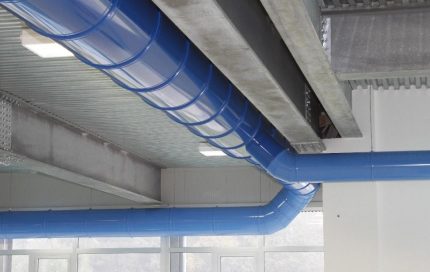
Rectangular designs weigh more and require significant material consumption. Their important advantage is the possibility of optimal placement in space.
Flat parts take up less space and are easy to position even in rooms with complex configurations or low ceilings. Elements are connected by flanges, mounting corners, busbars, latches.
Criterion No. 4 - by manufacturing features
According to their design, ventilation components can be divided into the following categories:
- straight-seam;
- spiral welded;
- spiral-wound.
Straight-seam products are made of a sheet of steel, which has a thickness of 0.55-1.2 mm and a length of 1.25 m. Such ducts can be either round or rectangular. In the latter case, the seam is placed on the bend, which provides additional structural rigidity.
Spiral welded Elements are made of steel tapes with an anti-corrosion layer applied to them. Such products have a thickness of 0.8 to 2.2 mm long without restriction. Since the welding of joints is overlapped, the products have a durable seam.

Spiral-wound ducts are often fabricated from galvanized steel strips, which have a thickness of 0.5-1 mm, a width of about 130 mm and an arbitrary length. They can be wound into a tape or into a ring. The latter option is considered better, but also more expensive.
Criterion No. 5 - by structural rigidity
If we consider the details for ventilation in terms of stiffness, then they can be:
- flexible;
- semi-rigid;
- tough.
Flexible Products are often called corrugated or spiral because of their appearance. Their basis is reinforcement made of durable steel wire, while the walls are made of laminated foil.
Such designs are easy to transport, maintain, lay, and at the same time they are easily combined with existing elements. However, corrugated walls reduce sound insulation and delay the speed of air passage.
Often corrugated ducts used to connect a cooker hood.
Semi rigid Elements are made of rolled aluminum tubes - steel or aluminum, with a spiral seam. Products combine the elasticity of flexible structures with the strength of rigid ones.
Unlike corrugated counterparts, they are able to stretch only once, after which they no longer compress. When using them, the speed of air masses is reduced, which is especially noticeable when used in branched ventilation systems.
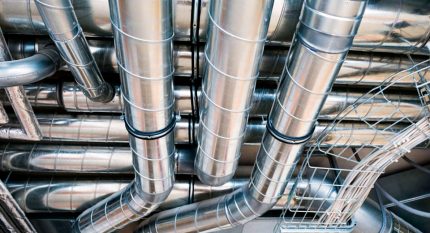
Hard round or rectangular elements can be made of different materials: steel, metal, polymers. Such designs have increased strength, they are easy to install and have excellent aerodynamic characteristics.
However, the heavy weight makes it difficult to transport them and negatively affects the laying of an integrated network with many branches. In this case, it may be necessary to strengthen the integrated system.
Duct size range
According to the regulatory documents mentioned above, round ducts made of galvanized steel are made with diameters of 100, 125, 140, 160,180, 200, 225, 250-2000 mm. Parameters of rectangular elements range from 100 to 3200 mm.

To select the products of the right size, you need to know the design value air speed. In residential buildings with natural ventilation, this figure should not exceed 1 m / s, and with forced ventilation - 3-5 m / s.
For each living room, you need to calculate the amount of air supplied. When calculating, you need to focus on regulatory documentation -SNiP 41-01-2003 and MGSN 3.01.01.
There are also special diagrams compiled by specialists, which make it easy to find the duct of the desired diameter for various options of standard systems.
Detailed information on calculating the area of the duct and fittings is presented in this article.
The subtleties of installing a ventilation network
Scheme laying of ventilation networks should contain a minimum of compounds. Air ducts are closed by two methods: flange and waferless.
Flange connection. Parts with flanges located on the edges are fastened with self-tapping screws or rivets, which are located at a distance of 20 cm from each other. For greater strength seams, they can also be brewed.
For joints to be sealed, it is recommended that the flanges be sealed with rubber gaskets.

Waferless method consists in connecting parts using a brace made of metal strips. This method is considered more economical because it allows you to quickly assemble the structure with minimal use of additional components.
What to look for?
The assembly of the duct from rigid parts should be carried out in the following sequence:
- Before work, the system must be divided into several blocks. The length of each of them should not exceed 15 meters.
- On all parts of the site - air ducts, shaped elements, connection points are marked.
- Holes of the required diameter are drilled at these points.
- Bolts are attached to them. Joints are treated with special adhesive tape or sealing compound.
- Then, a complete installation of the connecting components and ducts is carried out in a single unit, which is fixed with clamps and other parts.
- The assembled unit is lifted and suspended on a bracket or other hardware.
- The element is connected to the previously completed ventilation section, and the joints are necessarily sealed in diameter.
Installation of the system from flexible or semi-rigid elements is somewhat simpler, since in this case it is easier to perform turns and bends. It is important not to forget to monitor the careful sealing of the seams.
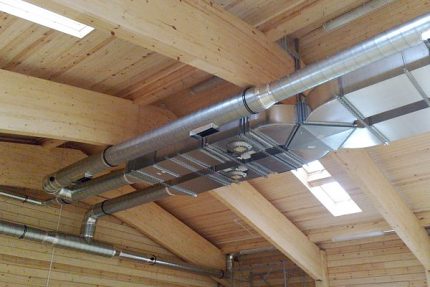
When assembling the system from flexible semi-rigid elements, you must pay attention to the following details:
- Before laying, stretch a fully flexible element;
- when pulling out the corrugated sleeve, it is important to observe the direction of air movement indicated on the pipe packaging;
- placing the duct, it is necessary to avoid its proximity to heating systems;
- the bending radius should correspond to the double diameter of the duct or exceed this indicator;
- fastening of sections is carried out using plastic clamps, foil tape, suspensions, clamps. All joints should be carefully sealed;
- when laying the system through the wall, you need to use special adapters - sleeves.
Installation of air ducts can be carried out both with insulation and without it. Thermal insulation prevents condensation in the supply ducts, therefore it is recommended to use it when laying ventilation elements in unheated rooms or outside buildings.
If the duct is installed in a living room where it is desirable to maintain a low noise level - a study, a bedroom, a nursery, you should think about sound insulation. A good effect is obtained by the use of ducts having a large wall thickness, as well as wrapping structural elements with sound-absorbing materials.
Conclusions and useful video on the topic
In the video presented, you can hear the opinion of a specialist about plastic ducts and tips for their installation:
When choosing ventilation elements, you need to carefully consider the layout of the system. Based on the plan, it is necessary to determine the design features of the ducts, their diameter, throughput, mounting methods and other factors.
It should be taken into account what types of communications are already laid in the house, as well as the material of walls, ceilings or other parts of the building along which it is planned to lay a network that provides air circulation.
Have something to supplement, or have questions about the selection and installation of ventilation ducts? You can leave comments on the publication, participate in discussions and share your own work experience. The contact form is located in the lower block.

 Ventilation in a private house: supply and exhaust systems + tips for arranging
Ventilation in a private house: supply and exhaust systems + tips for arranging 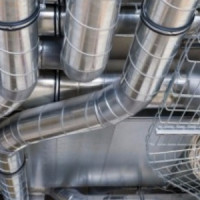 Arrangement of ventilation to the ceiling: types of ventilation systems and features of their arrangement
Arrangement of ventilation to the ceiling: types of ventilation systems and features of their arrangement 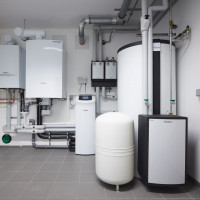 Requirements for the ventilation of a gas boiler: standards and features of the system assembly
Requirements for the ventilation of a gas boiler: standards and features of the system assembly 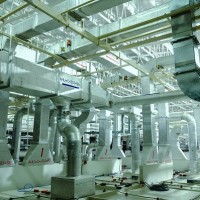 Requirements for ventilation of public buildings: subtleties of arrangement and design of ventilation
Requirements for ventilation of public buildings: subtleties of arrangement and design of ventilation 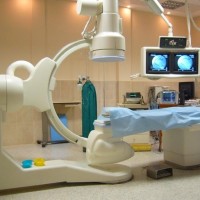 Ventilation and air conditioning for medical institutions: rules and features of the arrangement of ventilation
Ventilation and air conditioning for medical institutions: rules and features of the arrangement of ventilation  Features and frequency of checking the effectiveness of ventilation systems
Features and frequency of checking the effectiveness of ventilation systems  How much does it cost to connect gas to a private house: the price of organizing gas supply
How much does it cost to connect gas to a private house: the price of organizing gas supply  The best washing machines with dryer: model rating and customer tips
The best washing machines with dryer: model rating and customer tips  What is the color temperature of light and the nuances of choosing the temperature of the lamps to suit your needs
What is the color temperature of light and the nuances of choosing the temperature of the lamps to suit your needs  Replacement of a geyser in an apartment: replacement paperwork + basic norms and requirements
Replacement of a geyser in an apartment: replacement paperwork + basic norms and requirements
I myself do not understand ventilation systems, so I invited a friend of the engineer who works at the company to install ventilation systems. When he carefully examined my house, he issued a verdict. We installed metal-plastic ducts. Although they are not cheap, I decided to choose them because of good technical indicators. If you do not understand this topic, it is better to invite specialists for calculations and installation.But I recommend to know the general concepts of ventilation of your own home! After all, clean air is the key to health.